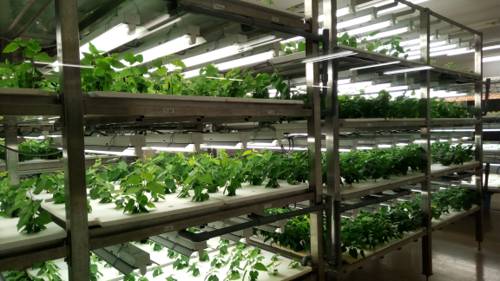
FAQ About Soil-Less Cultivation Methods for Indoor Plants

What is soil-less cultivation?
Soil-less cultivation, also known as hydroponics, is a method of growing plants without using soil. Instead, plants are grown in a nutrient-rich solution or another medium like sand, gravel, or coconut husk that provides support but not nutrients. This method is particularly beneficial for indoor plants, enabling better control over growth conditions and nutrients.

What are the benefits of using soil-less cultivation for indoor plants?
Soil-less cultivation methods such as hydroponics and aeroponics offer several benefits for indoor plants. These include faster growth rates due to direct nutrient absorption, reduced risk of soil-borne diseases, and efficient water usage. Additionally, these systems are space-efficient and can be customized to suit different plant needs, making them great for urban and indoor settings.

How does hydroponics work for growing indoor plants?
Hydroponics works by providing plants with a nutrient-rich water solution instead of soil. The plants are supported in a medium that holds them upright while their roots are submerged or sprayed with the solution. This allows for precise control over nutrients and water, leading to optimized plant growth and health.

Can any plant be grown using soil-less methods?
Most plants can be adapted to grow using soil-less cultivation methods, though some adapt better than others. Leafy greens, herbs, and tomatoes are commonly grown in hydroponic or aeroponic systems. However, larger plants or those with extensive root systems might require special adaptations or may not be as suitable for soil-less systems.

What is the difference between hydroponics and aeroponics?
The main difference between hydroponics and aeroponics is how the plant's roots receive nutrients. In hydroponics, roots are submerged in a nutrient solution. In aeroponics, roots are suspended in the air and misted with a nutrient-rich solution, providing better aeration and potentially faster growth.

Are soil-less systems more expensive than traditional soil gardening?
Soil-less systems can have a higher initial set-up cost due to the need for specific equipment like nutrient solutions, pumps, and grow lights. However, they can become cost-effective over time due to faster plant growth, higher yields, and reduced water and nutrient waste. Maintenance costs are relatively low compared to potential gains from increased productivity.

What types of mediums are used in hydroponic systems instead of soil?
In hydroponic systems, various inert mediums are used to support plants. Some common options include coconut coir, perlite, vermiculite, clay pellets, and rockwool. These mediums provide structural support while allowing easy access to the nutrient solution.

Do hydroponic plants have the same nutritional value as those grown in soil?
Hydroponic plants can have equal or even superior nutritional value compared to those grown in soil, as nutrients can be carefully controlled and tailored to each plant's needs. Studies have shown that plants grown hydroponically can be just as nutritious, if not more so, as they are often free from soil-borne contaminants.

Is it difficult to maintain a soil-less cultivation system for beginners?
While soil-less systems require a different skill set than traditional gardening, they are manageable for beginners. Basic knowledge of plant biology and understanding how to maintain nutrient solutions and environmental conditions can make the process straightforward. There are many resources and kits available designed to help beginners start with hydroponics or aeroponics.

What is aeroponics and how does it benefit plant growth?
Aeroponics is a method of growing plants in an air or mist environment without the use of soil. This method allows for extensive aeration of the roots, which can enhance nutrient uptake and plant growth. The increased access to oxygen can potentially lead to faster growth rates and healthier plants.

Can soil-less cultivation be used outdoors?
While soil-less cultivation methods are often used indoors, they can also be adapted for outdoor uses. Outdoor hydroponic and aeroponic systems can take advantage of natural sunlight while still benefiting from precise nutrient control and water efficiency.

How do you prevent pests in a soil-less growing system?
Pests in soil-less growing systems can be minimized through prevention strategies such as maintaining cleanliness, using sterile growing mediums, and ensuring proper air circulation. Beneficial insects and organic pest control methods can also be employed, as well as regularly monitoring plants for early signs of pest activity.

What nutrients are needed for hydroponic gardening?
Hydroponic gardening requires a balanced mix of essential nutrients, similar to what plants would obtain from soil. This includes macronutrients such as nitrogen (N), phosphorus (P), and potassium (K), as well as micronutrients like iron, magnesium, and calcium. Commercially available nutrient solutions often contain all necessary elements in the right proportions for various plant types.

Do you need artificial light for soil-less indoor gardening?
While natural sunlight is ideal, artificial lighting is often necessary for soil-less indoor gardening, especially in environments with limited natural light. LED grow lights are popular choices as they are energy-efficient and can be tailored to provide specific light spectrums that support plant growth.

How much water do hydroponic systems use compared to traditional methods?
Hydroponic systems typically use significantly less water than traditional soil-based gardening. This is because water in hydroponic setups is recirculated and reused, whereas in traditional gardening, a substantial amount of water can be lost through evaporation and runoff. This makes hydroponics a more sustainable choice in terms of water usage.

What is the easiest soil-less method to start with for beginners?
Many beginners find Deep Water Culture (DWC) to be one of the easiest soil-less methods to start with. It involves growing plants in a container where roots are suspended in a nutrient solution aerated with air pumps. This method is straightforward to set up and maintain, providing a good introduction to hydroponics.

Are there environmental impacts of using soil-less growing systems?
Soil-less growing systems are generally considered to be environmentally friendly due to their efficient use of resources like water and space. However, there are concerns about the energy used by lighting and pumps in larger systems, as well as the environmental impact of disposing of synthetic growing mediums. Using renewable energy sources and recyclable materials can mitigate some of these impacts.

Can soil-less cultivation methods help with food security?
Yes, soil-less cultivation methods have the potential to significantly enhance food security. They allow for growing food in areas with poor soil quality or limited space, such as urban environments. The increased efficiency and adaptability of these systems can lead to higher productivity and consistent output, which is crucial for sustaining populations.

What equipment is necessary to set up a basic hydroponic system?
To set up a basic hydroponic system, you'll need a container or reservoir for the nutrient solution, a water pump for circulation, air stones or bubbling devices for oxygenation, a grow light if natural light is insufficient, and a growing medium if needed. Starter kits are available that include these components, making it easier for beginners to get started.

How does oxygenation help in soil-less plant cultivation?
Oxygenation is crucial in soil-less plant cultivation because it ensures that plant roots receive enough oxygen to support their metabolism and growth. In hydroponic systems, air stones or diffusers are often used to keep the nutrient solution oxygen-rich, which helps prevent root rot and promotes healthy root systems, ultimately improving plant health and yield.
